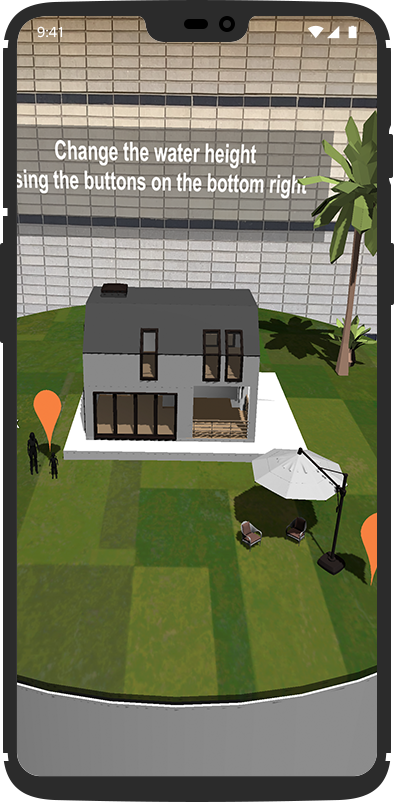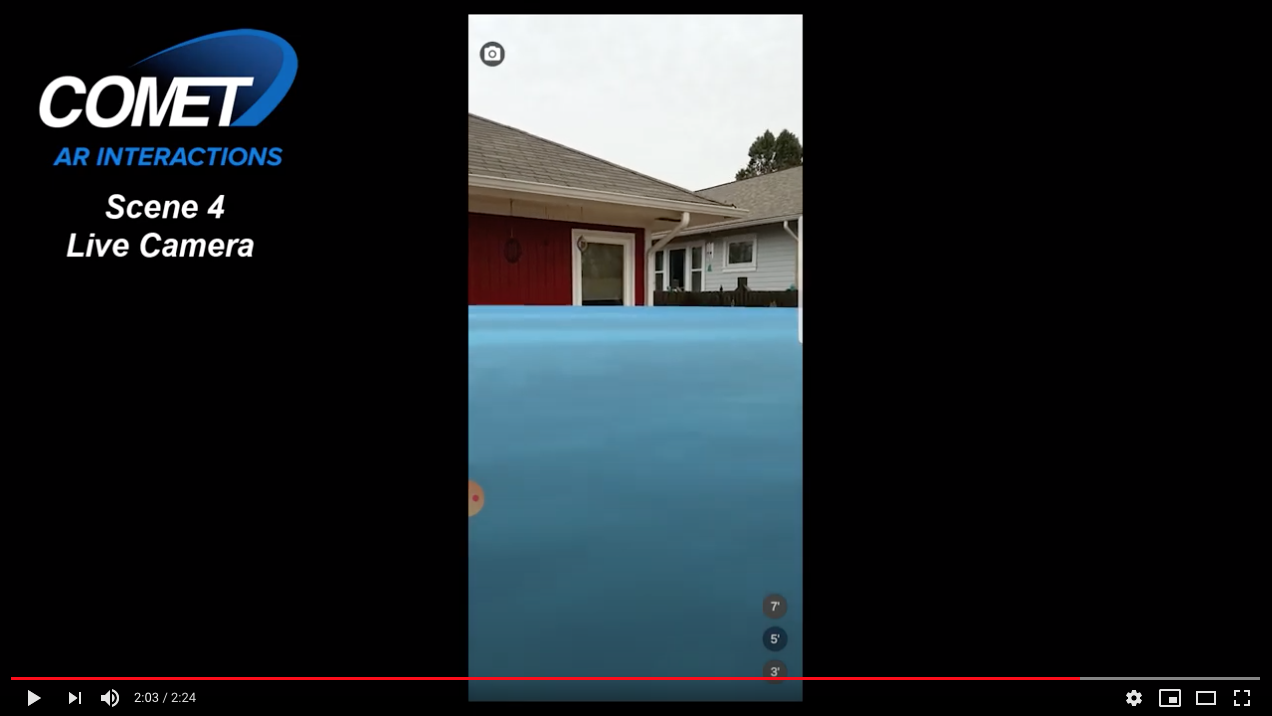Your house, but flooded: Augmented reality brings storm surge impacts home
COMET Program keeps innovating with foray into augmented reality app
May 11, 2020 - by Laura Snider
May 11, 2020 - by Laura Snider
 Beyond ferocious winds and flooding rains, hurricanes can pose another serious threat to coastal regions: storm surge. Warnings about storm surge, the mound of water pushed ashore by the hurricane’s winds, can get lost amid forecasts for high winds and rainfall, but the phenomenon can have devastating impacts on local communities.
Beyond ferocious winds and flooding rains, hurricanes can pose another serious threat to coastal regions: storm surge. Warnings about storm surge, the mound of water pushed ashore by the hurricane’s winds, can get lost amid forecasts for high winds and rainfall, but the phenomenon can have devastating impacts on local communities.
What those impacts might look like, however, can be difficult to visualize in advance.
A new augmented reality app developed by the COMET Program is working to change that. Storm Surge AR gives users multiple ways to interact with varying levels of storm surge, including the ability to envision water flooding your own house.
“Our long-term goal is to help people be prepared if a hurricane is threatening their area,” said Tsvetomir Ross-Lazarov, who led the development of the app for COMET. “Ideally, augmented reality will help people visualize the risks, see the possible impacts, and then take action to prepare.”
The COMET Program is part of the University Corporation for Atmospheric Research.
The storm surge that accompanies a landfalling hurricane can cause damaging floods, but the size of the surge depends on multiple factors. These include the topography of the ocean floor along the shoreline, the angle of the incoming storm, and the timing of the tides, among other variables.
For example, the storm surge from Sandy was about nine feet in New York, pushing the storm tide to nearly 14 feet total. The resulting inundation was responsible for a large chunk of the storm’s $19 billion price tag.
Storm Surge AR, which is available on iOS or Android, can educate users about how storm surges form. But the real advantages of the app include the ability to virtually explore a house that is flooded at different levels, see how storm surge would look in a city from a bird’s eye view, experiment with using sandbags to hold back floodwaters, and even point your camera at your own house or other surroundings with superimposed floodwaters.
“When you see your house underwater, it creates an emotional reaction,” Ross-Lazarov said. “It’s not just theoretical possibilities anymore. You can visualize the real impacts.”
While augmented reality apps are becoming more common, they are not yet intuitive for many. Ross-Lazarov has heard from some users who aren’t sure how to interact with the app: they’re often trying to pinch and zoom instead of physically move around. But augmented reality is about moving within your space.
To encourage users to explore, the developer team placed Easter eggs (that may, or may not, have sharp teeth) throughout the water.

The new Storm Surge AR app is just the latest educational innovation for the COMET Program. COMET was founded three decades ago to provide meteorological training for the National Weather Service, and its first computer learning modules were available on LaserDisc.
Since then, COMET has moved online and expanded its offerings to cover everything from hydrology and oceanography to fire weather and emergency management. There are currently over 500 modules online, all of them free to access.
Storm Surge AR represents a new foray for COMET, and building the app was as much about creating something useful as it was an exploration of what might be possible in the future. Ross-Lazarov envisions a wide variety of ways AR could help educate future students. For example, could a future app allow people to “see” the air as it flows over the mountains and forms clouds? Could it make invisible atmospheric processes like that visible?
“I think that the evolution that is happening with augmented reality on our phones and tablets can allow us to create some really useful educational tools,” he said. “There is a lot of promise for where this may go.”